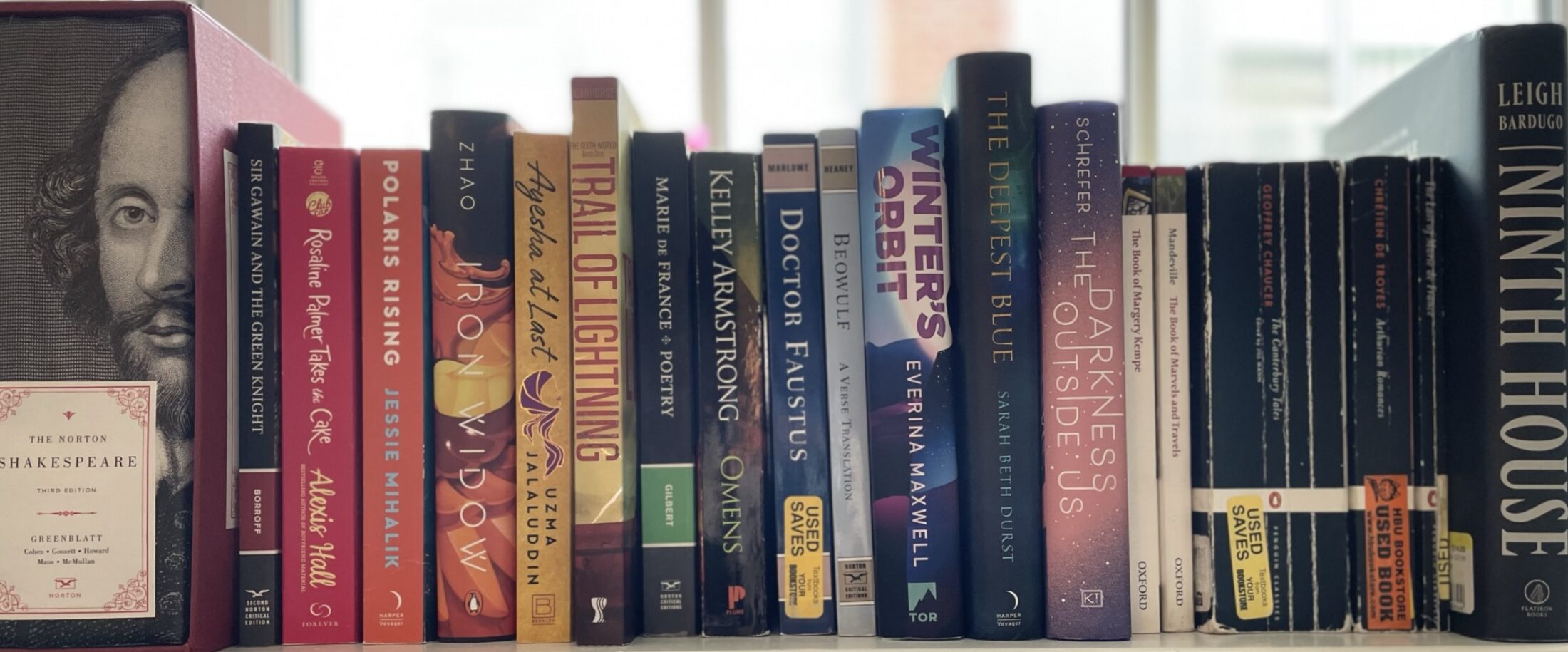In short, object words in this corpus reveal sites of gender negotiation through gendered-object-use, displaying the role of Courtly Love through word frequency. Across A.S. Kline’s English translations of Sir Gawain and the Green Knight, The Twelve Lais by Marie de France, The Canterbury Tales by Geoffrey Chaucer, and The Arthurian Romances by Chrétien de Troyes,1 object-words appear with descriptors denoting the aesthetic and use-value properties of objects. I aimed to track both gendered objects as well as magical and non-magical objects in the text.
Admittedly, my attempts to trace magic through object word count did not amount to significant results using my current knowledge of AntConc and Voyantools. I believed the problems appeared because across an individual text, a close reader becomes aware of magical objects in texts naturally whereas word count analysis looks for larger repetitions read distantly across texts. As an example, looking for the magic belt in Sir Gawain and the Green Knight is easy when you read the lai, but it’s hard when you are trying to target that magic belt and exclude mundane belts in the text. As Picard notes, belts were used for a variety of tasks due to their popularity as belts “provided a way of carrying purses and knives and ‘tables’—small wax tables for note-taking—and those useful documents that physicians carried with them. Sometimes a ‘pair of pockets’ could be slung on a belt” (259). The variety of belt uses in the corpus, and throughout history provides an interesting challenge for cleaning or collocating the right set of words to divide the magical from the non-magical belts.
However, I also consider this may be a limitation with the way I used the tool. If I continue forward with this project, I will consider using tools to look for other ways magic is defined in the texts instead of just through potions and charms. My object-based search approach stopped me from including search terms of magical beings (like fey, witches, warlocks, and other supernatural creatures). Additionally, further practice with the collocation function may enable me to identify magic items and discard the nonmagical items from my set. Moving forward, I do believe there is value in studying magical object words across texts and finding a way to specify my data analysis of magic objects.
Ultimately, I found my examination of object-gender collocates the most fascinating part of my analysis. The object words examined in Objects currently requires additional study to fully unearth valuable insights. I found a strong indication throughout the corpus masculine descriptors are collocated more often with object words than feminine descriptors. While there was an increase in domestic object words like cloth*, bed*, and embro* these collocates did not rise above embro*’s 41.18%. The role of Courtly Love may accounts for female object-use from domestic object words to battle object words. A further examination of object-gender collocate differences between texts would be an interesting extension of my current results.
Although women are important in producing, curating, and maintaining these items, men are primarily handling them. Objects used for women by men typical in Courtly Love are reflected in their appearance. Aspects of Courtly Love likely impact the object-gender collocates in the text, as in some instances, men are handling objects for the women in the text. In Arthurian romances, gendered-objects-use indicates the power to use tools is primarily masculine, however, the potential to shape the use of these tools may still lay with their Ladies. Future research will continue to examine the intricacies of the gendered power dynamic of Courtly Love through gendered-object-use in Breton lais.
